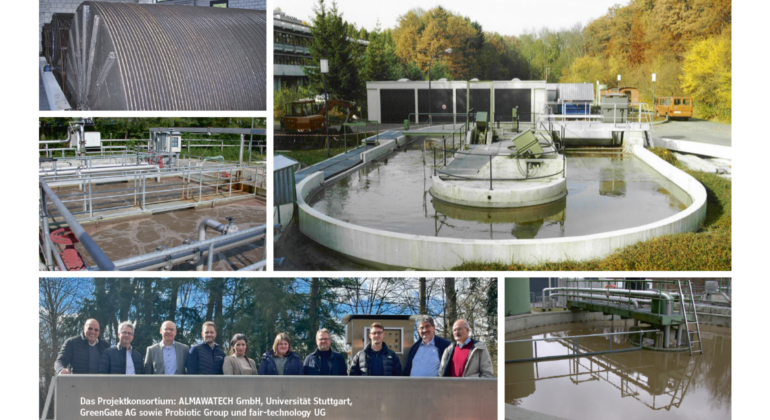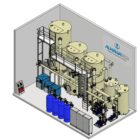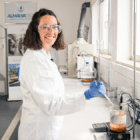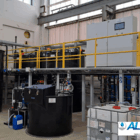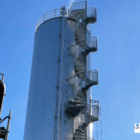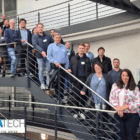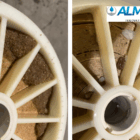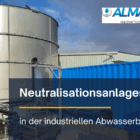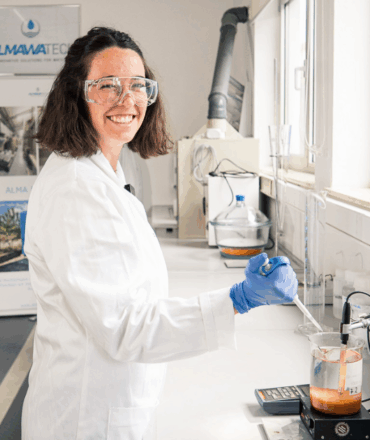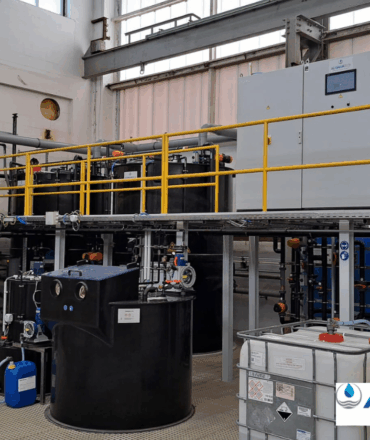The sustainable and efficient treatment of wastewater and sewage sludge is one of the biggest challenges facing municipal wastewater treatment plants today. With our new ZUMISPEK research project, we are taking an innovative approach to both optimizing phosphorus recovery and increasing the energy yield in wastewater treatment plants.
Table of contents
Project partners and objectives
In close cooperation with the University of Stuttgart and the GreenGate AG ALMAWATECH is pursuing the goal of raising wastewater and sewage sludge treatment to a new technological level. The research project focuses on the use of microbiological solutions that are specially tailored to the needs of wastewater treatment and sewage sludge systems.
Technological goals of the project
- Selection of specialized biomasses: Special microorganisms are isolated from existing wastewater and sewage sludge that have the potential to bind phosphorus more efficiently and optimize digester gas production.
- Cultivation of inoculated sludge: The isolated sludge is cultivated in special reactors on site to support wastewater treatment in a continuous process.
- Software-controlled inoculation: By using customized software, the inoculation of wastewater and sewage sludge is precisely controlled to ensure stable, microbiological processes.
Overriding advantages
The ZUMISPEK project offers numerous advantages through the use of specialized bacterial cultures and state-of-the-art reactor technology:
- Higher yields in phosphorus recovery: phosphorus is used as a fertilizer, among other things
- Substitution/elimination of the addition of precipitants for phosphorus recovery
- Reduction of sewage sludge: The amount of sewage sludge produced is significantly reduced, which reduces the disposal effort and costs.
- Increase in digester gas production: The digester gases produced can be used for energy and thermal recovery, which increases the energy efficiency of wastewater treatment plants.
- Reduced electricity requirements and CO₂ emissions: By eliminating complex treatment processes and reducing the amount of sewage sludge, the external electricity requirement is reduced and CO₂ emissions are reduced at the same time.
An innovative approach to sewage sludge treatment
ZUMISPEK is pursuing a completely new approach: the condition-controlled cultivation of microorganisms in combination with a reactor technology used in situ enables stable, controlled processes in phosphorus and energy production for the first time. The sensors continuously monitor the system status and pass the information on to special software that controls the growth of the biomass. This ensures that inoculation takes place at exactly the right moment and in the right quantity to achieve the best results.
The bacterial strains are selected by isolating them from wastewater and sewage sludge. Next generation sequencing (NGS) techniques are used to analyse the microorganisms and characterize their degradation potential. These specialized bacteria are then used in laboratory tests for phosphorus removal and sludge reduction before the processes are further investigated under realistic conditions in semi-industrial activated sludge systems.
Sustainability and future potential
The material and energy efficiency of wastewater treatment plants is a decisive factor in achieving environmental and climate policy goals at municipal level. Sewage treatment plants are among the largest energy consumers and CO₂ emitters. At the same time, sewage sludge represents a valuable phosphorus reservoir, the recovery of which has so far been associated with great effort.
Microbiological approaches, such as those being developed in the ZUMISPEK project, can address both challenges simultaneously. Specialized bacterial cultures can simplify phosphorus recovery and increase the amount of digester gas that can be produced - a promising solution for a sustainable future for wastewater treatment plants.
Conclusion
The ZUMISPEK project has the potential to significantly improve phosphorus recovery, digester gas production and sludge reduction in wastewater treatment plants. Through the innovative use of microbiological solutions and modern reactor technology, it offers a promising approach to increasing the efficiency and sustainability of wastewater and sewage sludge treatment.
Stay tuned to find out more about our progress in this pioneering research project!


